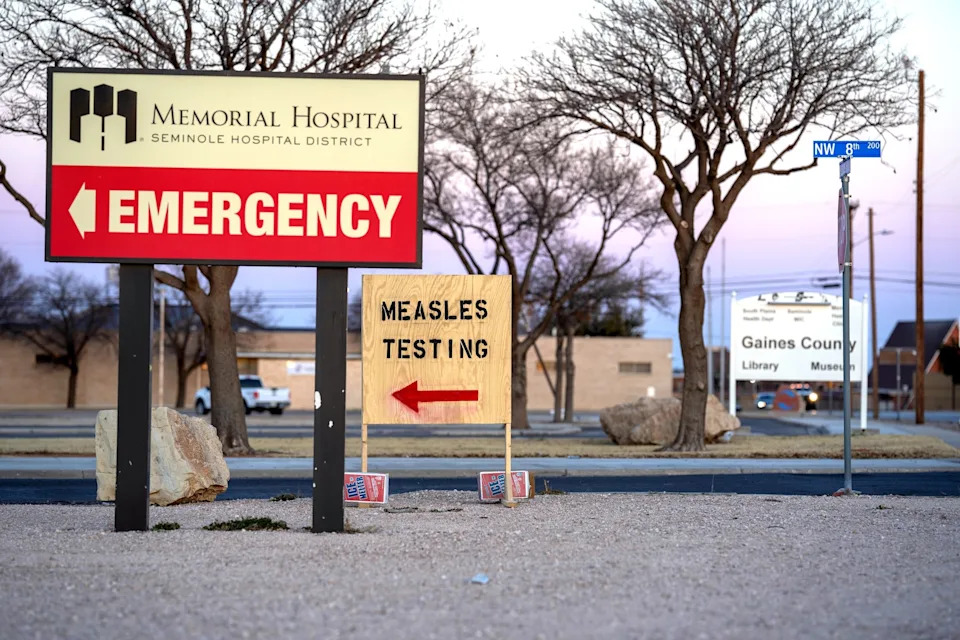New COVID-19 cases continue to crop up nationwide as new variant XFG makes gains both domestically and abroad.
Some regions of the United States are experiencing higher rates of positive COVID tests than others, though reporting has slowed down enough nationwide that the Centers for Disease Control (CDC) has begun allowing more time to pass between certain types of updates, such as those on variant prevalence.
However, amid the confusion of new strains, changing vaccine guidelines and cuts to vaccine development funding, the CDC continues to track cases, hospitalizations and deaths on a weekly basis.
Here's what to know about the latest data.
How many COVID cases were reported nationwide?
During the week ending on Aug. 9, 8.9% of the 28,051 Americans tested were positive for COVID, according to the CDC's latest data. This was a 0.6% increase from the week prior.
During the same period, 0.4% of cases resulted in death and 1% resulted in an emergency room visit, a 0.1% increase from the week prior for both categories.
Where are the most COVID cases being reported? See map
Western and southern states, including Washington, Oregon, Idaho, California, Nevada, Arizona, New Mexico, Texas, Oklahoma, Arkansas and Louisiana, as well as Alaska, had higher percentages of positive COVID tests during the week ending Aug. 9.
What is the most common COVID variant?
The CDC has moved to using longer data timeframes for COVID tracking due to low reporting from states. According to the latest data for the two weeks ending June, variant NB.1.8.1 remained the most common, accounting for 43% of cases, followed by LP.8.1 at 31% of cases and XFG at 14%.
NB.1.8.1 experienced a meteoric rise to becoming the predominant variant, accounting for 0% of cases in April and only 10% in the last week of May, up to 24% at the beginning of June and 43% by the end.
XFG, a combination of variants F.7 and LP.8.1.2, is on the rise as of late, having been responsible for 0% of U.S. cases through March, 11% by early June and 14% by late June.

What are current COVID vaccine guidelines?
Health and Human Services (HHS) Secretary Robert F. Kennedy Jr. said on May 27 that the COVID-19 vaccine would no longer be included in the CDC's recommended immunization schedule for healthy children and pregnant women, a move that broke with previous expert guidance and bypassed the normal scientific review process.
Under the changes, the only people who will be recommended for COVID-19 vaccines are those over 65 and people with existing health problems. This could make it harder for others who want the COVID-19 vaccine to get it, including health care workers and healthy people under 65 with a vulnerable family member or those who want to reduce their short-term risk of infection.
State health departments and national professional organizations, including the American Medical Association (AMA) and American Academy of Pediatrics (AAP) and the American College of Obstetricians and Gynecologists (ACOG), have broken from RFK and HHS on these guidelines, agreeing to publish their own guidelines.
These recommendations have remained consistent with those maintained by the World Health Organization (WHO), which said that currently approved COVID-19 vaccines are expected to remain effective against new variants.
WHO, AMA, AAP and existing standards recommend that people who have never received a COVID-19 vaccine, are age 65 and older, are immunocompromised, live at a long-term care facility, are pregnant, breastfeeding, trying to get pregnant, and/or want to avoid getting long COVID, should get the vaccine, especially.
What are the symptoms of current COVID-19 strains?
While some people report symptoms like hoarseness or "razor blade throat" being more common with some variants, health agencies, including the CDC and WHO, note that there is no evidence of certain symptoms being unique to different strains.
The CDC outlines the following as common COVID-19 symptoms:
Fever or chills
Cough
Shortness of breath or difficulty breathing
Sore throat
Congestion or a runny nose
New loss of taste or smell
Fatigue
Muscle or body aches
Headache
Nausea or vomiting
The CDC advises seeking medical care if you experience any of the following symptoms:
Trouble breathing
Persistent pain or pressure in the chest
New confusion
Inability to wake or stay awake
Depending on skin tone, lips, nail beds and skin may appear pale, gray or blue
This article originally appeared on USA TODAY: COVID variants, testing and guidelines: What to know this week






Comments